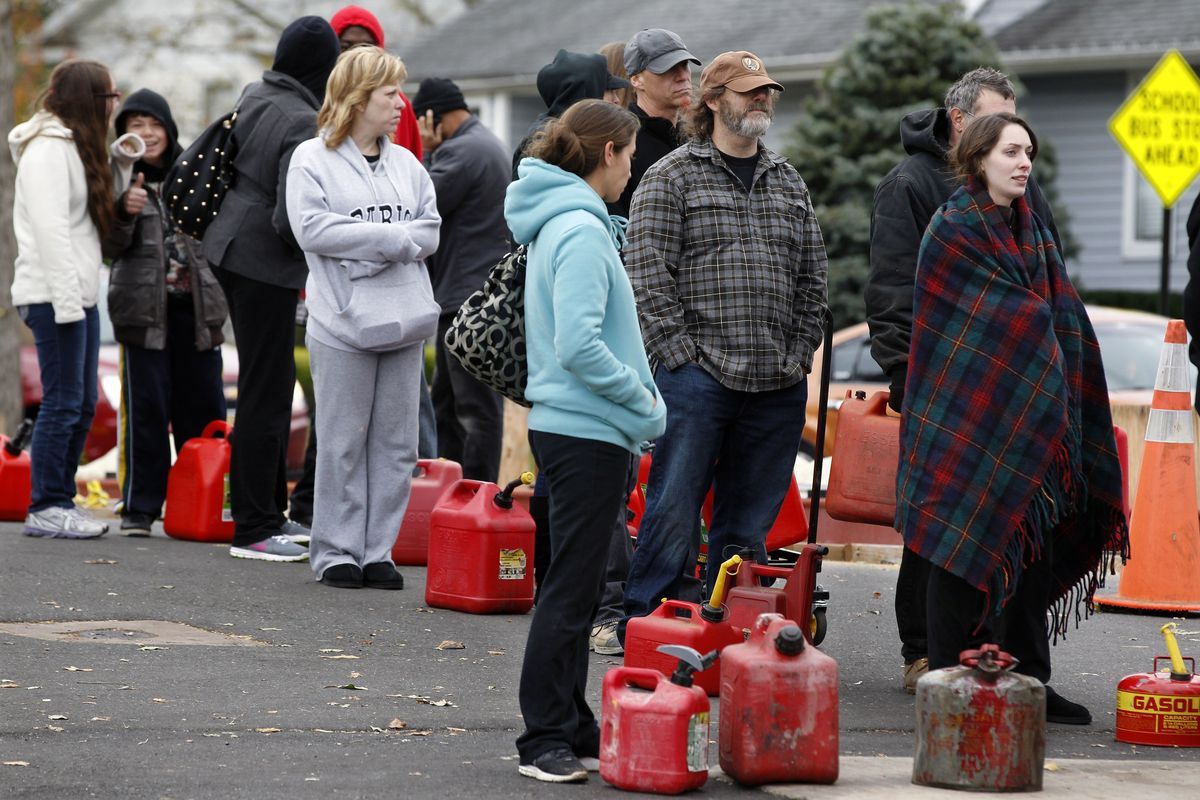Bodies found as Sandy leaves
Victims include New York boys swept from their mother’s arms

WANTAGH, N.Y. – Sandy’s U.S. death toll rose on Thursday after the bodies of two young boys were found in a Staten Island marsh, and the economic loss rose to an estimated $50 billion. That would make the storm the second-costliest in American history, after Hurricane Katrina.
On Day 4, it was as if the Northeast had removed a bandage – in some areas, healing was evident; in others, the wounds remained severe, and despair set in. Authorities said Thursday’s discovery of the two boys pushed the death toll to about 90.
Airports and subways reopened and electricity had been restored to nearly half of the 8.5 million homes and businesses that lost power during the storm. Authorities said they expected to return power Saturday to Lower Manhattan, where a quarter of a million people remained. Evacuation orders were lifted from some beach communities.
But progress was paralyzed in some areas by a new development – gas shortages.
“It’s like gold,” said Billy O’Mahoney, service manager at the Wantagh Car Care Center in Wantagh, inland from shore communities of Long Island that were hammered by Sandy.
Tanks at many petroleum terminals were allowed to run dry before the storm landed to prevent a public health disaster. Now officials are struggling to refill them.
Refineries, pipelines and gas stations across the region have been disrupted by power outages and storm damage. Terminals for gas imports remained shuttered and two major ports for gasoline were closed. Even when ports and terminals are stabilized, debris floating in waterways could keep tankers from getting in, authorities said.
“My supplier says it will be two or three days until we get gas,” O’Malley said.
Outside the Lukoil gas station in Little Falls, N.Y., cars were lined up for nearly two miles and moved at a glacial pace under the watchful eyes of police officers and sheriff’s deputies.
“The things we take for granted,” said Lameese Zaitoun, 38.
Some drivers waited for two hours, only to see pumps run dry when they were nearly to the front of the line.
“Everybody is in panic mode,” said Venus Bennett, 37, as she waited on her lawn for her husband, Chris, to come home with enough gas to attend a relative’s funeral. The line at her local station was a half-mile long. The good will that was generated after the storm seems to be petering out, she said. “A few fights almost broke out. This is scary.”
In New Jersey on Thursday, Gov. Chris Christie began lifting evacuation orders in some barrier island communities, but not all. Atlantic City, just north of the spot where the storm came ashore, remained evacuated, and even those towns where the orders were lifted remained under a 6 p.m. to 6 a.m. curfew. Christie also deployed state troopers to the coast to ensure safety and security.
In Hoboken, N.J., across the Hudson River from Manhattan, floodwater began to recede, but the city of 50,000 remained staggered by the storm. In an interview, Mayor Dawn Zimmer said half of the city had flooded, including two electrical substations, the bus depot, the wastewater treatment system and three of the city’s four fire stations.
“Our city was overtaken by the Hudson River. It’s really historic, and it has been devastating,” she said.
In New York, the airports – many of which had flooded – reopened. The first flight into JFK International was a Federal Emergency Management Agency plane. Gov. Andrew Cuomo said the National Guard and FEMA would distribute a million meals in Lower Manhattan and in hard-hit neighborhoods of Brooklyn and Queens, including the spit of land where more than 100 homes were destroyed in the wake of the storm.